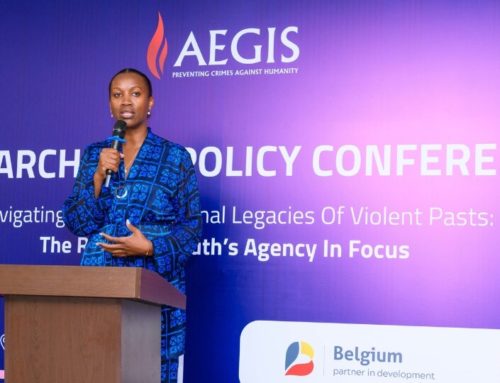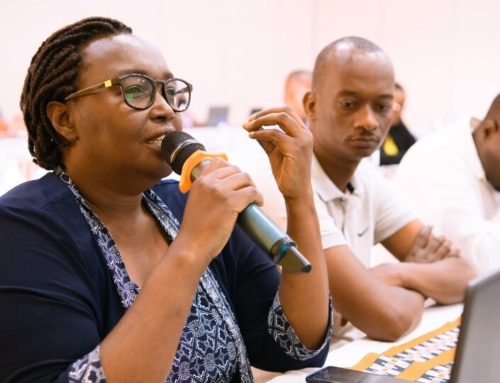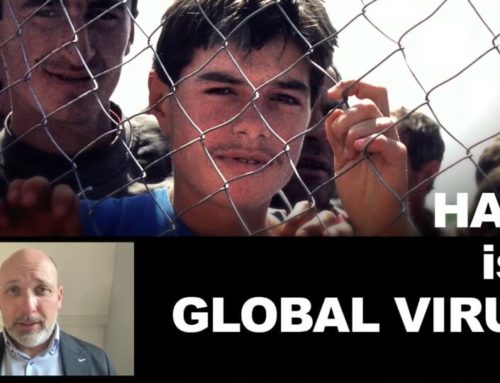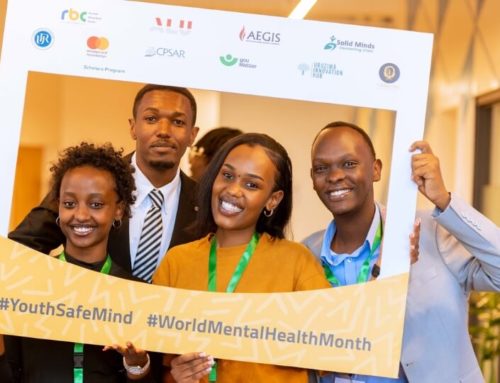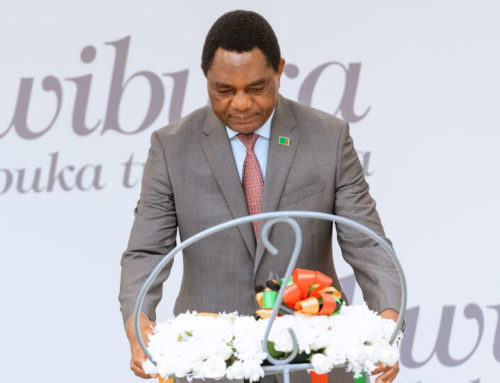Alfred Ndahiro
Contents
Introduction
The Immediate Aftermath of the 1994 Genocide
Acheivements in Post-Genocide RwandaPeace and security
National Unity and Reconciliation
Justice
Accountability for genocide
Prosecutions before ordinary courts
Communal justice system (Gacaca)
Health and Social affairs
Accessibility to health services
Education services
Democratization
Governance reforms
Economic governance and reforms
Empowering the Youth and Women
Challenges to the Government of Rwanda
Conclusion
The foundations of post independence Rwanda were built on a legacy of utter disregard for human rights and the rule of law. Starting from 1959, tens of thousands of innocent Batutsi men, women, and children were killed in the name of a revolution. Hundreds of thousands more were deprived of their homes and other property and banished to refugee camps inside the country or driven to exile, mainly in the neighbouring countries where they languished for over thirty years.
Atrocities and other gross violations of human rights organized and carried out by the governments of the day continued throughout the 1960s and 1970s. Government repression against Rwandans who remained inside the country escalated and intensified, irrespective of ethnic identity. The independent press was suppressed. Political opposition was harassed, to the extent that deputies representing opposition politicians in the First Parliament had all been killed by 1966 and Rwanda was soon declared a one party state.
This entrenchment of dictatorship and gross violation of fundamental human rights went hand in hand with institutionalised discrimination akin to apartheid. Access to education, employment or public service was strictly governed by quotas based on ethnicity or regional provenance. The Batutsi had been reduced to second-class citizens in their own country. They were repeatedly killed with such impunity that when 1994 came, hundreds of thousands of their country men and women responded to incitement to kill them again, this time with unprecedented ferocity. The institutions of the state and public officials responsible for public order and for protecting the population turned around and organised the genocide that was unique in its barbarity, speed and scale, and one that will remain a grim reminder of man1s inhumanity to man.
The Immediate Aftermath of the 1994 Genocide
July 1994 found Rwanda on its deathbed. The air was filled with the stench of death: heaps of corpses were on every inch of the land while others floated freely on lakes and rivers. Within the space of one hundred days, over a million Rwandans had perished at the hands of their compatriots, who used every implement imaginable: guns, grenades, machetes, spears, axes, bludgeons or just pieces of wood. A number of victims were burnt in their houses or in churches, while others were smashed against walls and rocks, or just thrown into pit latrines and other deep pits to die there.
Only a few people out of those targeted survived this pogrom, mostly those who were left for dead. Some others were able to hide in ceilings or swamps, and others miraculously escaped the eye of the rampaging, different killer groups. Even those who survived were maimed, and all were left with dreadful wounds. Their wounds were both physical and mental, as they had all witnessed this horror, as well as the death of their relatives and neighbours; some of them killed by their other relatives and neighbours: fathers killing their children, husbands their wives, wives their husbands, children their parents.
As the Rwandan Patriotic Army (RPA) advanced to halt the genocide, the killers fled through the nearest border-points into the neighbouring countries of Tanzania , Burundi and the Democratic Republic of the Congo (DRC, the then Zaire ). On fleeing, the refugees, who included government officials, officers and men of the national army, private individuals and the rest of the peasantry, fled with the entire infrastructure: money out of the banks, vehicles, military tanks and arms, as well as all the ammunition. In all, over three million people poured into the neighbouring countries, although the bulk of the armed and militia groups sought refuge in the DRC, where they saw a chance to reorganise so as to resume their genocidal campaign and complete their macabre business. The rest of the killers who did not flee set up camps within the country as internally displaced persons. As a matter of fact there was total displacement of the population and countless numbers had been orphaned, widowed, handicapped and were generally in a very vulnerable situation.
Rwanda lay in limbo, and there was need to start everything anew, if it was going to function ever again as a country. The winning Rwandan Patriotic Army and its political wing – the Rwandan Patriotic Front – had two choices to make: to declare the situation hopeless, consider Rwanda a failed state (in the eyes of many observers, Rwanda indeed looked like a failed state) and engage in revenge killings and more auto-destruction. Alternatively, they would take to the drawing board, set about the difficult task of rebuilding the country, and shape a destiny for the Rwandans, once more as a peaceful and reconciled people. In essence the choice was one and naturally they took the latter option, choosing to form a government of national unity that embraced Rwandans of every persuasion, save those who had participated in the genocide.
When the Government of National Unity was set up in July 1994, the whole country was shattered and was in a state of utter anarchy. Its social and economic infrastructure was in a state of collapse. The whole population was greatly divided, deeply traumatised and needed healing if life was to go on. “Law and order had completely broken down. Large-scale atrocities were still going on in parts of the country. The judicial infrastructure had either been damaged or destroyed. All national law enforcement agencies and judicial institutions had ceased to exist and the system of administration of justice had come to a complete standstill. Neither schools nor hospitals were functioning. The civil service had been decimated or its membership had fled into exile” . Public utilities such as electricity, water and telephones were not functioning. The fleeing genocidaires had run away with practically all the money and the little money left in the banks lay in vaults whose location was unknown to the newcomers. There were no functioning banks, factories, shops or even open-air markets. Commercial and residential buildings stood in an eerie silence, shattered or intact but almost all invariably containing dead bodies. Instruments of death lay everywhere: guns, grenades and all the other crude implements. Genocide survivors were still scattered all over the country, deeply traumatized. The genocide had greatly divided and polarized the country. Most worrying, however, was that a cloud of insecurity hang over the country, as former soldiers and militia groups reorganized across the border in the DRC, with the tacit support of the then President Mobutu.
Acheivements in Post-Genocide Rwanda
Immediately after genocide, eight political parties that had not participated in the genocide formed a transitional government, the Government of National Unity, and began the monumental task of rebuilding the country. This was a defining moment and a challenge to all Rwandans. Clearly, the task at hand was exceptional and daunting. But the Rwandan people refused to be a failed state. Instead, they resolved to fight the ideology of genocide and to build a country governed by the rule of law. The results are there for everyone to see, and most observers believe that in the last ten years, the Government of Rwanda has made considerable progress in the reconstruction and rehabilitation of Rwanda , through the resilience, hard work and sheer determination of the Rwandan people.
The first challenge, and probably the biggest, that confronted the new Government of National Unity was to stabilize the country, restore law and order, and create conditions that would enable the people of Rwanda to live in peace and feel secure, following the traumatic events they had just experienced. While this posed the biggest challenge, it has also proved to be the most important achievement in the last ten years. In the words of H.E. Paul Kagame, “against the backdrop of decades of bad governance, the achievements of the Government of National Unity stand out very clearly. The biggest achievement we have made is that we have achieved stability – social, political and economic stability – which Rwanda had not experienced for a very long time” .
To achieve peace and stability, a number of strategies were put in place: in the first place refugees were repatriated, starting with the old caseload of 1959 and, subsequently, the new refugees of 1994 were repatriated and resettled. To that end, nearly three-and-a-half million Rwandan refugees have been repatriated and resettled since 1994. Property occupied by the returning 1959 refugees was returned to their lawful owners who had left after the 1994 genocide. The soldiers of the former regime (ex-FAR) who lay down their arms were integrated into the RPA to form a new national army, the Rwanda Defence Forces (RDF). Since 1994, about 15,000 elements of the Ex-FAR have been integrated into the Rwandan national army at various command levels, as well as within the rank and file. This has not only enhanced peace and stability, it has also further accelerated the process of reconciliation, which is the subject of the following section.
National Unity and Reconciliation
At the heart of the success of the Government of National Unity lay the philosophy of unity and reconciliation. Since the 1994 genocide, national unity and reconciliation have been regarded as the only sure way of transforming Rwanda and guiding the country to lasting peace. To this end, a National Unity and Reconciliation Commission was established in March 1996 and was given the responsibility, amongst others, of sensitising all Rwandans about the need and importance of unity and reconciliation, of conducting civic education, and fostering community initiatives, geared towards fostering the unity and reconciliation of the Rwandan people.
The Commission has held regular consultative meetings with citizens of all categories and has facilitated debates at national level with the aim of promoting unity and reconciliation among Rwandans. Every year a national summit has been organised in which Rwandans from within the country and those from the Diaspora have gathered to share and exchange views on how best Rwanda can forge ahead. More specifically, this summit examines the extent to which justice, unity and reconciliation have been achieved.
While unity and reconciliation provided the necessary basis for Rwanda to forge ahead, despite the tremendous challenges, it was also necessary to ensure that there was justice for the victims of genocide.
The rule of law cannot be realized in the absence of a credible judicial system. The Government of National Unity has made the establishment of an independent, impartial and effective judicial system a topmost priority.
At the end of the genocide in 1994, Rwanda1s system of administration of justice had practically ceased to exist. Most judges, prosecutors, and policemen had either died during the genocide or fled the country in its aftermath. The infrastructure of judicial instructions lay in ruins. All equipment had either been damaged or looted. The Government of National Unity had to rebuild the judicial system from scratch by recruiting new personnel, undertaking training, rehabilitating infrastructure and providing necessary equipment to judicial infrastructure.
Furthermore, the Government undertook far-reaching reforms which gave independence to the judiciary for the first time. The executive relinquished its role in the running of the judiciary for the very first time in the history of the country. This was done by enacting a law establishing an independent council composed exclusively of judges and entrusted with the responsibility to appoint, discipline and remove from office members of the judiciary and deal with all matters affecting their careers.
Prior to 1994, there was no association of legal practitioners. Any person, whether he or she had legal training, could apply for and be granted permission to appear before courts and represent clients. In its efforts to promote the better functioning of the country1s legal system, the Government of National Unity passed a law which established the Bar Association for the very first time. The bar is now making a vital contribution to the development of the legal system.
That said, the judicial system in Rwanda is still beset by problems of mismanagement, incompetence of personnel, and cumbersome procedures which delay or defeat the process of justice.
In recognition of these shortcomings, and in an effort to resolve them, the Government of National Unity established the Law Reform Commission and instructed it to give top priority to legislation to reform the judicial system. The recommendations of the Law Reform Commission were largely adopted by the government and have been implemented by the new constitution. Appropriate legislation to give effect to the provisions of the new constitution on the reform of the judicial system has already been drafted and will be enacted in the very near future. The far-reaching reforms of the judicial system which the new constitution has effected will make the judicial system more efficient and sensitive to the protection of the rights and interests of the population.
The most pressing issue which the Government of National Unity had to deal with upon assuming office in 1994 was the question of accountability for genocide and other serious violations of international humanitarian law which had been committed between 1990 and 1994.
The Government of National Unity decided from the very beginning to deal with the issue of accountability for genocide within the framework of the rule of law, believing that only the rule of law would help to heal the bitter divisions within our society and ensure peace, democracy and respect for human rights which the Rwandan people had for so long been deprived of.
In other words, the manner in which the prosecution of genocide in Rwanda was undertaken was dictated by a variety of considerations: the demand of the surviving victims of genocide for justice; the necessity for accountability as a tool for eradicating the culture of impunity; the desire to make the rule of law the cornerstone of a new society being built in Rwanda in the aftermath of the genocide and the necessity to fashion a response to the genocide that would consolidate peace, promote reconciliation and facilitate the reconstruction and development of the country.
Prosecutions before ordinary courts
The Government in the first instance tried to deal with the genocide caseload in the framework of ordinary courts.
The law which was passed in 1996 to pave the way for the prosecution of the genocide caseload attempted to address the above considerations by creating specialized chambers within existing courts to deal exclusively with genocide and related cases, retaining the concept of personal accountability for crimes committed, categorization of suspects according to the degree of responsibility, providing incentives to join a confession and guilty plea programme in order to expedite the processing of the caseload awaiting trial, and abolition of capital punishment for the majority of the perpetrators of the genocide.
Ordinary courts have over the past six years tried more than 6500 of genocide cases expeditiously. However, it soon became evident that the classical system of justice was not adequately meeting the challenge of promoting unity and reconciliation, as the wider society outside the legal profession did not always have an opportunity to participate in the judicial proceedings.
Communal justice system (Gacaca)
A new legislation on the traditional participatory forms of justice at the community level (Gacaca) was adopted to speed up the trials of caseloads, to help in revealing the truth about genocide and reconciling the Rwandan people.
The overwhelming number of suspects of genocide in various Rwandan prisons and the delicate nature of the crimes they committed, necessitated a return to traditional justice. With over 120,000 prisoners, there was no way a poorly equipped judicial system could handle the backlog of cases. Yet justice is an important component of the reconciliation process. It is in this context that the government of Rwanda decided to set up a traditional, participatory form of justice that was used in Rwanda in the pre-colonial days, which involves the community. It was adopted to speed up the trials of caseloads, to help in revealing the truth about genocide and in the reconciliation of the Rwandan people. Gacaca is based on the administrative structures already in place, the cellules, sectors Akagari and Umurenge and on the categorization of genocide suspects according to the crimes of which they are accused.
On January 1st 2003, suspects of genocide who were supposed to be released in accordance with the Gacaca Organic law were granted provisional liberty. These included those who had confessed their crimes, those who were terminally sick and the elderly, and those who had been imprisoned while they were minors.
The operation of Gacaca courts throughout the country are being monitored and supervised by a co-ordination department set up within the Supreme Court. A programme of Œsensitisation1 has been taking place and the Gacaca courts have been in session.
Rwanda has made significant progress in the improvement of health and the socio-economic situation of its citizens. The fight against HIV/AIDS has been given priority by the Rwandan leadership. Rwanda like many other African countries has adopted a multi-sectoral approach to the fight against the AIDS pandemic. Numerous sensitisation campaigns by political leaders, the media and other groups including the youth have taken place. A national network for people living with AIDS exists and these same people are getting more and more involved in the battle against the scourge. A national AIDS Commission (CNLS) was established in 2000 and is composed of members from all walks of life (government, private sector, civil society and parliament), and each province has a branch of the AIDS Commission.
Over the last three years, resource mobilization for the fight against HIV/AIDS has improved because of various advocacy campaigns, spearheaded by the President and the First Lady. Multi-lateral organizations, including the World Bank have provided funding in the fight against HIV/AIDS. For example USD 30.5 million was allocated to Rwanda in form of a grant for a five year period in their programme called MAP ( Multi-sectoral AIDS Project). Rwanda was among the first three countries to receive the World Bank fund as a grant. Rwanda was also among the first 40 countries to receive a grant from the United Nations Global Fund. The Rwandan Global fund project on integrated VCT has been awarded 14 million USD for a three year period.
Besides these initiatives, Rwanda has been identified by the UNAIDS as having one of the best pilot programs for the prevention of mother-to-child transmission in Africa.
Government has also facilitated access to drugs for HIV and for opportunistic infections. Currently anti-retroviral drugs are on the list of Essential drugs. This implies that such drugs must be available and accessible to the population at all times, including the survivors of genocide, who contracted the AIDS virus during the genocide. Besides, Government efforts to negotiate with manufacturing companies have helped to reduce the price of HIV drugs from USD190 per month in 1999 to USD 60 per month this year.
The Government of National Unity has also continued to take care of the most needy survivors of the 1994 genocide. Through a Genocide Survivors1 Fund, the government provides support in education, shelter, health and income generating activities for the most vulnerable amongst the survivors. About 5% of GDP (approximately 4 billion Rwandan francs) is allocated to this fund. Donations from members of the public or private sector, as well as from the international community, are welcome. During the academic year 2001/2002, the Survivors1 Fund (FARG) provided scholarships to 33,431 students in secondary schools while another 5,000 were supported by USAID. In 2000, about 70,000 genocide survivors received free medical care. The support to survivors also covers rehabilitation of their houses.
Accessibility to health services
Over the last three years, health insurance schemes have been created and the Government allocated to them 700 million FRW. In 2002, the Ministry of Health registered 60 such health mutual societies (mutuelles de sante1). This number increased to 88 in 2003. These health insurance schemes have greatly reduced the high cost related to health care for families and communities, particularly those living in the countryside. It is anticipated that they will allow the population to be self sufficient and will constitute one strategy to fight poverty, one of the biggest challenges facing the country.
Besides the health insurance schemes, government has been able to renovate health centres as well as construct new hospitals. For instance according to the Ministry of Health, 11 health centres and 2 district hospitals were constructed in the last three years. The health budget has also doubled since 2000 from 3,660 billion Frw to 7,615 billion Frw.
Close to 100% of primary school age now attend school. The days of rationing how many people will access university education as was the case with the previous regime are over. Rwanda today has over six Universities with a total enrolment of above ten thousand compared to 1994 when total enrolment was below one thousand.
Institutions such as the National Examination Council, National Curriculum Development Centre, General inspectorate of Education, the Department of Research and Planning in Education are some of the institutions that have been established since 1994. Higher institutions of learning that were established between 1994 and 2003 include Kigali Institute of Science, Technology and Management (KIST), Kigali Institute of Education (KIE), Kigali Health Institute (KHI). It is important to note that the Government of Rwanda has placed ICT at the centre stage in her socio-economic transformation, which is why it is emphasized in the education police of the country.
Good governance and respect for human rights are inseparably tied. The gross violations of human rights which the people of Rwanda have been subjected to in the past were inevitable consequences of dictatorial government. The political leadership at all levels of the country historically took a leading role in organizing the periodic atrocities which took place and were individually responsible for most of the day to day abuses to which the citizens of the country were subjected.
The Government of National Unity has instituted far-reaching changes in the way the county is politically governed. It has established a system of decentralized government whose objective is to empower communities at grassroots level and to give them a say in how they are governed. The government has also initiated a process of democratization which shortly will culminate in presidential and parliamentary elections.
The outcome of this process of democratisation is to put in place accountable government institutions which are freely elected by the people themselves and are accountable to the electorate. There is no doubt that the changes in the way the country is governed which have been implemented will lead to further enhancement of respect for human rights in Rwandan society.
Since 1994, the Government of National Unity has been involved in diverse but interconnected processes whose overall aim is to ensure good governance, accountability and the rule of law, the absence of which has been the primary cause of the tragic experiences our country has gone through.
The government of Rwanda has implemented programmes of socio-political reforms, aimed at improving good governance and empowering the population through decentralization and democratisation. Laws on fiscal decentralization were enacted in 2001 and a decree creating the Common Development Fund (CDF) for Districts and Towns was adopted in 2002 and mechanisms for the distribution of the state resources at all levels have been provided. The Electoral Commission was strengthened to organize and oversee the election activities. Elections at district level were held in March 2001 to ensure broad participation in the political and economic reforms at grassroots level and in March 2002, elections were held to renew the mandate of the cell and sector leaders who had been elected in 1999.
A Constitutional making process has been carried out in a participatory framework and the draft of the Constitution was presented to a conference composed of about 700 people. A referendum on the new constitution took place on Monday 26th 2003. Presidential and Parliamentary elections were held in August and September, 2003.
Economic governance and reforms
As previously mentioned, existing economic, social and legal institutions needed to be re-established and rehabilitated, while others needed to be set up to take care of the new situation. Rwanda1s economy was shattered by the events of 1994. Over the last nine years, however, a lot has been achieved with regard to reviving the economy. Cabinet has approved a draft for our Vision 2020, which provides the country with a roadmap for development until year 2020. A national Similarly, an Investment Strategy was designed and adopted by cabinet on September 23, 2003. It aims to improve the prioritisation of investment in Rwanda.
As it has been observed, to understand Rwanda1s present, it is vital to glimpse a little into its past.
Throughout the 1970s and early 1980s, Rwanda1s economy sustained some minimum growth of about 3 percent per annum while the rest of Africa was on a downward spiral. Rwanda1s benefit from the chaos in the neighbouring countries of Uganda and DRC was temporary. As Rwanda1s Minister of Finance, Dr. Donald Kaberuka has observed, the chaos that engulfed Uganda under Iddi Amin, and the crisis of state collapse in Mobutu1s Zaire provided the government of Rwanda an opportunity to have access to smuggled coffee from these two neighbours and export a quantity that the country was not producing. So this was the good performance based on someone else1s misfortune rather than sustainable government policies.
Rwanda1s economy was in decline from 1985 as real GDP growth failed to keep in tune with population growth. Total flow of foreign aid was 80% of the growth domestic product ( GDP ), as there was a large number of donors and donor programs.
It is no wonder therefore that most of the infrastructure in Kigali today was built after 1994. Prior to 1994, tax to GDP ratio was estimated at 6%, indicating that there was little to tax in spite of growth. In fact, bilateral donors‹France and Belgium , were helping Rwanda1s balance of payment position.
It is in this context that the government of Rwanda has sought to restructure the economy and return to growth. To turn away from control, government started a process of economic reform, regulation and state command to market policies.
Rwanda began the process of recovery in earnest in 1995. In 1995 for instance, growth in real GDP was 35.2%; 1996, 12.7%; 1997, 13.8%; 1998, 9%; 1999, 7.6%; 2000, 6% ( this was due to drought); 2001, 6.8%; 2002, 9.9%. Rwanda1s growth in the ratio of tax to GDP has equally been impressive: 1995, 6.8%; 1996, 9.3%; 1997, 10.4%; 1998, 10.6%; 1999, 10%; 2000, 9.7%; 2001, 11.4%; 2002, 13%.
Despite this however, all is not well for Rwanda1s economy. The foreign debt stands at USD 1.3 billion. Rwanda has benefited from the IMF and World Bank sponsored Highly indebted Poor Countries ( HIPC ) debt relief initiative to the tune of USD 850million, which is about USD 640million in Net Present Value ( NPV ) terms.
The Government of Rwanda is looking more into policy incentives to promote exports. Rwanda1s exports earning are a meagre USD 100 million from trade in goods and services plus another USD 100 million in unrequited transfers. Rwanda import bill stands at USD 280 million. A Poverty Reduction Strategy Paper (PRSP) was in November 2000 officially adopted by Cabinet. The overall objective of this is to reduce poverty from the current head count ratio of 60% to 30% by the year 2015.
Government continues to adopt measures to increase revenues and rationalize the tax system, including the successfully introduced VAT in 2001.
Besides all these initiatives and strategies, a number of institutions have been created. These include the Rwanda Revenue Authority, the National Tender Board, the Inspector General of Finance and Audit ( IGA ). The Public Accounts Division in the Ministry of Finance has been revived.
On February 25, 2003, the Cabinet approved the creation of an autonomous National Bureau of Statistics ( NBS ). All these measures are aimed at consolidating the policy of good governance, which is the cornerstone of the new administration.
Empowering the Youth and Women
The Youth and women empowerment has been a priority of the Governm

